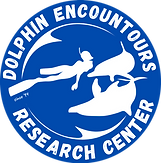

Filming
Movies - Documentaries
COMMERCIALFILM
PERMITPHOTO
Subject to synopsis including:
-
all proposed activities
-
proposed dates
-
description of content
-
purpose of shoot
-
list of equipment including drones
RECREATIONAL
FILMPHOTO
The use of GoPro's and other action camera's are permitted while on our encountours. Just a word of advice, leave it up to Angie and the centers volunteers to capture the moments so you don't loose out on the experience.
The use of GoPro's and other happy snappy camera's are permitted while on our dolphin tours HOWEVER The filming of dolphins and other marine megafauna in the Maputo National Park (MNP) for commercial purposes is only allowed under special permission granted from the National Administration of Conservation Areas in Mozambique. Permit fees apply for commercial productions. Please email Angie who will be able to assist you with arranging permits, accommodation, transfers and boating requirements. Your Guides when filming Angie Gullan has spent almost three decades befriending, filming & monitoring the local dolphins. Her longterm relationship and work ethic is visible in material she has captured over the years, were many interesting behaviors have been observed. Patience is needed to get the right shot at the right time. Wind, rain, visibility, dolphin abundance & sociability play a part in making it all come together. With this said, allocate enough time. Season & SeaState It is recommend that filming be undertaken in low season. This ensures less stress on the dolphins & quieter waters. Dolphins tend to be more accommodating when there is less boat & human pressure. Launching is not undertaken in high seas, wind & rain. Boats & Crew Our boat ‘Avalon’ is an 8m semi ridged dive boat that has been specially designed with comfort, the dolphins & surf launching in mind. She takes a maximum of 16 persons including a crew of 4: captain, field guides (1or2) & deck hand. She is powered by new generation 4 stroke Suzuki 90‘s to ensure less fuel consumption and noise when working with our dolphins. There is ample space for camera boxes & dry boxes are available for non waterproofs. Code of Conduct Dolphin advocates that the less boat pressure on the dolphins, the better. We maintain a one boat policy. Filming is undertaken in accordance to the DolphinCare Code of Conduct & Ethics Guide set out by the African Wildlife Film Makers Association.(AWFA). Use of material Dolphins material is available for use in scientific & educational productions as well as documentary and advertising. Material obtained in collaboration with DERC is to be supplied in a usable format in order to add to the DolphinCare’s data bank for research purposes. Two copies of the final product (including soundtrack) is to be supplied upon release.
SPECIAL WILDLIFE PHOTOGRAPHY CONSIDERATIONS
-
The subject and the habitat are more important than the photograph..
-
First study the species you want to photograph.
-
Make sure that you can recognise signs of stress.
-
Never let your presence cause the animal any stress.
-
If there is a sign of stress, pull back.
-
Familiarise yourself with the local rules concerning wildlife, such as the minimum distance to be kept between you and the animals, and be sure to obey them.
Private Filming Charter: R8500 for 2hr
-
Keep in mind that the animals are always unpredictable and that you are intruding in the animal's world - you are its guest. Conduct your activity accordingly and leave whenever your host gives even the slightest hint that you are no longer welcome.
-
Do not entice a wild animal with food (baiting) in order to get the photo.
-
Allow the animal to be wild, and to move about on its own accord.
-
Photos & film of baited wildlife are prohibited on some sites.
-
Consider using camouflage to bring the subject within photo range without disturbing it.
-
Use a lens of long enough focal length to avoid approaching the subject too closely.
-
Consider composing your photos to show more of the animal's environment.